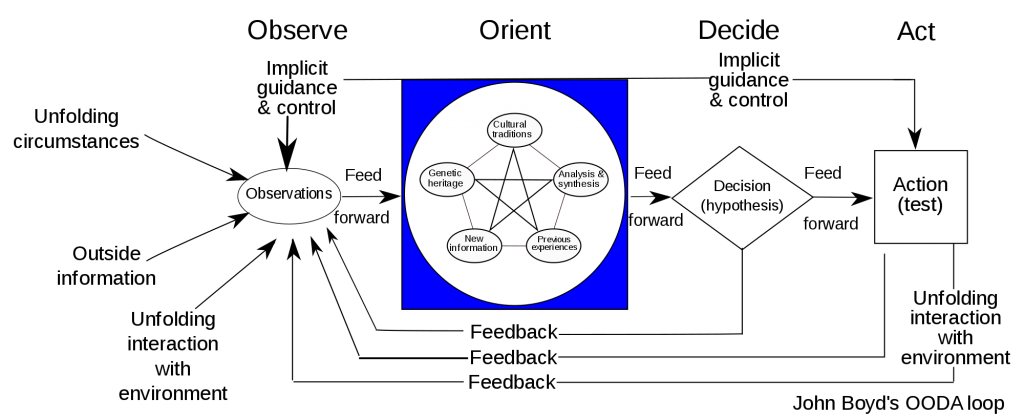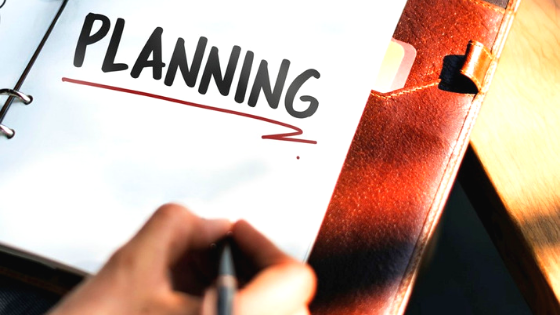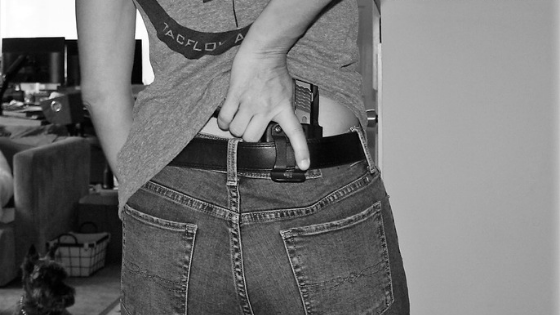Awareness is a choice. Paying attention to your surroundings is a chief ability for anyone to have. Mastering situational awareness will exponentially increase your chances of staying alive when things go south, and things can go south very fast; trust me, I’ve been there.
The superhuman capacity to look at your environment and make instant accurate decisions is not a thing of movies like Bond or Borne anymore. We cannot look at situational awareness as a skill required only by law enforcement, military, or even assassins. Civilians must strive to stay safe in an ever-changing world by learning to predict when a scenario is about to turn dangerous. Being aware of a risk before it happens can save your life and that of your loved ones, pets included.
Anyone can learn to master the skill of situational awareness. All it takes is practice and dedication, and it becomes second nature.
In an emergency situation, you don’t have the luxury of taking extra time for anything. Knowing what’s happening around you at all times gives you an advantage when it comes to protecting yourself and your loved ones.
Paying attention to your surroundings can increase the likelihood you’ll survive in a violent situation such as a mass shooting, an attack, or a similar event.
Everyone, especially parents, must have ability to assess, analyze, and pick apart a situation that’s about to turn bad and make split second decisions about it. Absolutely everyone.
Developing Situational Awareness: OODA

Situational awareness is more than just knowing what’s going on around you by scanning the environment. It requires that you understand what you’re looking for when you’re skimming the area. You don’t need years of training to notice when something is out of place, especially if you frequent the same locations. If you pay attention, then you’ll always know when something doesn’t seem, feel, smell, or sound right.
Situational awareness is much more than just “checking your six”
and “keeping your back to the wall.”
If you don’t understand what you should be looking for, then you will not be able to make fast decisions about situations. You must pay attention to the right things. You must understand the warning signs of an imminent threat. You must Observe, Orient, Decide, Act (OODA).
OODA is perhaps the greatest strategic contribution to the military. It’s a learning system and decision-making process first introduced by John Boyd. The main idea behind OODA is that the individual or group who manages to make it through all the stages (Observe, Orient, Decide, Act) the quickest, wins.
As civilians, we must enhance our observational abilities to improve our situational awareness skills. We must also learn to orient ourselves properly so that we can observe the right things. This will help us understand the context of what we’re seeing and act accordingly.
Practice these when you are out and about…
- Keep your head up.
- Your eyes on your phone all the time doesn’t fly.
- Get your eyes, ears, and nose off social media and scan the room, calmly.
- Twisting your head like an owl to scan the room will not work.
- Stay alert but relaxed.
- Don’t bring unnecessary attention to yourself.
- Stress and anxiety can narrow your attention.
- Narrowed attention means you’re not taking in all your environment.
- Stress can reduce your reaction time.
- Take your surroundings in with all your senses.
- Situational awareness requires more than just visual reference.
- Sounds (or lack thereof) can tell us a lot about a particular situation.
- Put yourself in an ideal observational position
- To scan the room, you have to be able to see the room.
- To observe and absorb your surroundings properly.
- Don’t sit in a way that prevents you from viewing the entrance.
- Don’t sit giving your back to the entrance or in a place where many people can walk freely behind you.
- Mike Seeklander from Shooting Performance recommends a spot that allows you to view all or most of the exit points. Your back should be to the wall.
- A back to the wall position strategically preps you for a quick getaway and removes any threats behind you.
Here’s a comprehensive guide to OODA.
Planning & Prepping for the Inevitable

Be prepared and have a plan. Always.
This doesn’t translate into becoming a doomsday prepper and turning your family or life into a bunker building, stock food piling, survival practicing craze.
You already take the time to plan which route you’ll take to work or school, even considering which roads to avoid. Without the need to create a dissertation size document, take the same time and attention to study many other factors that can affect your life and create a disaster response guide before going anywhere. If you consider safety factors every time you walk out (or in) your door, you will decrease your chances of being the victim of a violent crime.
Situational awareness does not require you to move around looking like an electric eel. If you practice it every day, it becomes part of you, and it serves as a skill and tool to help keep you and your loved ones safe.
There are simple adjustments anyone can do to incorporate situational awareness into their daily lives. There’s no need to become an over-paranoid conspiracy theorist, you just have to stay vigilant and be prepared. Being prepared doesn’t require you to carry military arsenal with you at all times, although that would make me feel very safe.
The thing with emergency situations is that you never know when or where you are going to find yourself dealing with one.
Imagine you need to pump gas. There’s a guy standing around with shifty eyes, hands in his pockets. He looks nervous when there’s nothing around to be nervous about. He looks out of place. If you plan and prepare, you’ll be the first one to see him, and the first one to act. In a life or death situation, seconds matter.
Or perhaps a crack addict ran out of money and needs a fix, so he decides that your neighborhood pharmacy was worth “hitting” that day. If you plan and prepare, you will be the first one to notice his odd behavior and know he’s up to no good.
Or think about the armed guy (or gal) who decided to rob the coffee shop where you and your child stopped for a break. If you plan and prepare, and add your parenting skills, you’ll definitely be the first one to see him. Hopefully you have a tactical diaper bag and react accordingly.
What to Carry

To be prepared try to always carry items you’ll need in case the shit hits the fan:
- Gun:
- A sure topic to raise eyebrows, but as someone who has been the victim of attacks, I strongly recommend a firearm for personal and home protection, for both men and women.
- If you live in a firearm friendly state get trained, certified, and practice.
- Make sure you practice with the firearms you plan to use for personal and home defense.
- Knife:
- Perhaps one of the most important and functional items to carry, carrying a knife is important, and it doesn’t have to be commando size.
- To cut food, a seatbelt, break a window, or use a weapon, always carry a small/medium knife. Check your local state carry laws before buying or carrying a knife.
- Cell-Phone:
- Carry your phone everywhere, and make sure it’s always fully charged.
- Although cell-phones are negatively affecting our situational awareness, when used as a tool, your cell-phone has the capability of serving as a flashlight, camera, and communication/location device.
- Have disaster readiness and triage apps installed and studied.
- Flashlights:
- Technology has advanced enough for anyone to have a tactical flashlight handy. No excuses.
- You can use this to blind an attacker, as self-defense weapon, and of course, as an illuminating device.
- First Aid/CPR:
- There’s no excuse for any adult, especially parents, not to be certified.
- If you haven’t done so, at least get a cheat sheet.
Having a disaster preparedness plan at home is great, but things can change very fast when you’re out of your house and you should plan for this as well. Simple additions to your everyday life can go a long way in an emergency.
Practicing Situational Awareness at All Times

To consciously observe your environment, scan for threats, and take action you must practice.
Practice when you enter a public place. Whether it is a movie theater, a pub, or a concert, always scan the area immediately after entering. Identify the exits, and take notice of obstructions to get to these. Determine the best place to sit, stand, or gather in case of an incident.
Notice people. Take note of their behavior. Most fights, I have learned, have advanced warning. It is different for attacks of other nature. Pay special attention to things that might be off, as not everything will be as obvious as someone wearing a winter coat mid-summer in Miami.
Detect objects in the room or area that could be of use should you need to defend yourself or your loved ones. Are there any good weapons of opportunity? You’ll be surprised what can serve as one.
Know your strengths, weaknesses, and limitations. Unless you have prior law enforcement or tactical training, keep in mind what you have the capacity to do when assessing a potential response to an emergency situation. Don’t leave your family behind to go play hero unless you have proper training and you’re certain they will be 100% safe. Please don’t be the dead hero, you’re far more useful alive.
Situational Awareness requires that you keep an open mind at all times. It also requires that you keep open ear, eyes, and nose, and develop a keen sense for naturally absorbing your surroundings regardless of location.
Stay focused yet relaxed. Embrace your intuition. Follow your gut.
